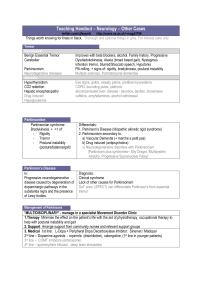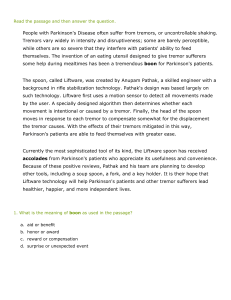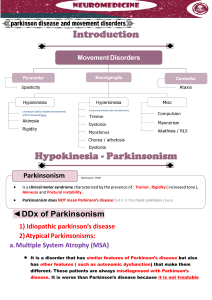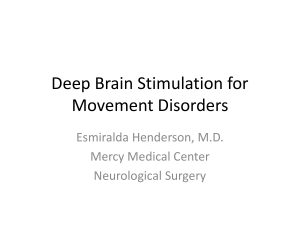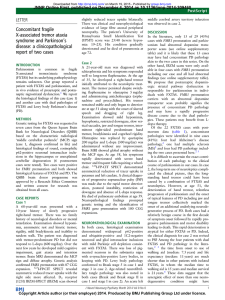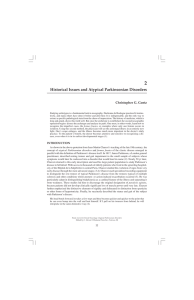Discrimination of Parkinson Tremor from Essential Tremor Using Different EMG
advertisement
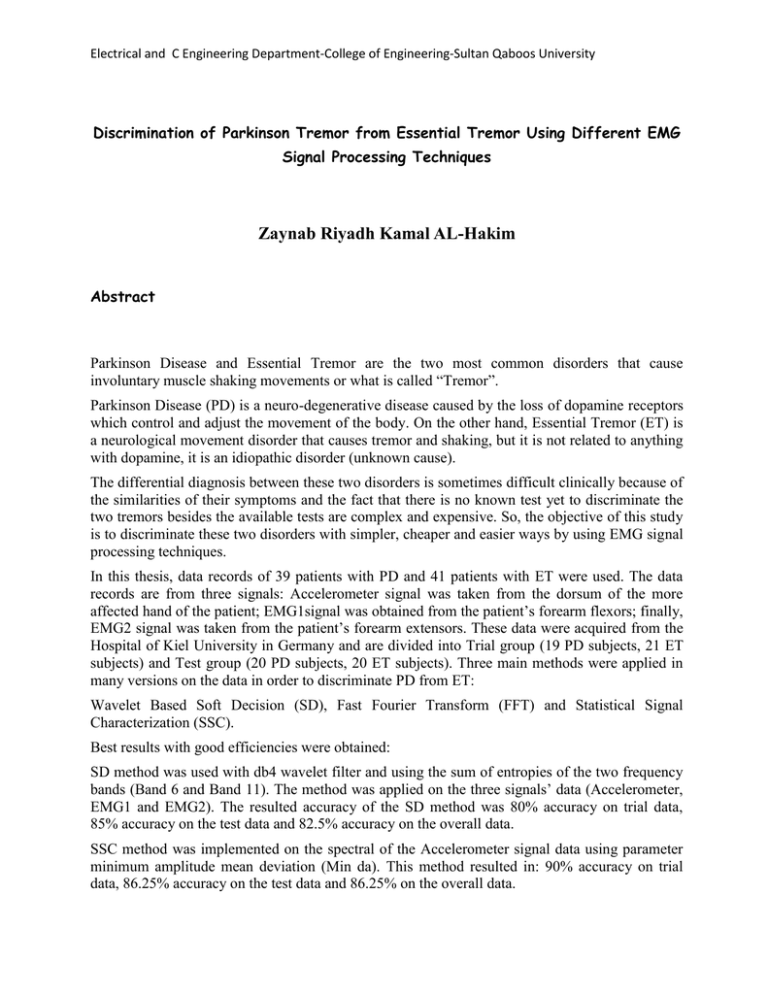
Electrical and C Engineering Department-College of Engineering-Sultan Qaboos University Discrimination of Parkinson Tremor from Essential Tremor Using Different EMG Signal Processing Techniques Zaynab Riyadh Kamal AL-Hakim Abstract Parkinson Disease and Essential Tremor are the two most common disorders that cause involuntary muscle shaking movements or what is called “Tremor”. Parkinson Disease (PD) is a neuro-degenerative disease caused by the loss of dopamine receptors which control and adjust the movement of the body. On the other hand, Essential Tremor (ET) is a neurological movement disorder that causes tremor and shaking, but it is not related to anything with dopamine, it is an idiopathic disorder (unknown cause). The differential diagnosis between these two disorders is sometimes difficult clinically because of the similarities of their symptoms and the fact that there is no known test yet to discriminate the two tremors besides the available tests are complex and expensive. So, the objective of this study is to discriminate these two disorders with simpler, cheaper and easier ways by using EMG signal processing techniques. In this thesis, data records of 39 patients with PD and 41 patients with ET were used. The data records are from three signals: Accelerometer signal was taken from the dorsum of the more affected hand of the patient; EMG1signal was obtained from the patient’s forearm flexors; finally, EMG2 signal was taken from the patient’s forearm extensors. These data were acquired from the Hospital of Kiel University in Germany and are divided into Trial group (19 PD subjects, 21 ET subjects) and Test group (20 PD subjects, 20 ET subjects). Three main methods were applied in many versions on the data in order to discriminate PD from ET: Wavelet Based Soft Decision (SD), Fast Fourier Transform (FFT) and Statistical Signal Characterization (SSC). Best results with good efficiencies were obtained: SD method was used with db4 wavelet filter and using the sum of entropies of the two frequency bands (Band 6 and Band 11). The method was applied on the three signals’ data (Accelerometer, EMG1 and EMG2). The resulted accuracy of the SD method was 80% accuracy on trial data, 85% accuracy on the test data and 82.5% accuracy on the overall data. SSC method was implemented on the spectral of the Accelerometer signal data using parameter minimum amplitude mean deviation (Min da). This method resulted in: 90% accuracy on trial data, 86.25% accuracy on the test data and 86.25% on the overall data. Electrical and C Engineering Department-College of Engineering-Sultan Qaboos University SSC method was applied on the Amplitude Deviation of the Hilbert Transform using parameter average of period mean deviation (Mean(dt)) using EMG2 signal data. The method resulted efficiencies of: 87.5% accuracy on the trial data, 65.5% accuracy on the test data and 76.25% accuracy on the overall data. Finally, a Voting between the above three methods was applied resulting in accuracy of: 92.5% accuracy on the trial data, 85% accuracy on the test data and 88.75% accuracy on the overall data. In conclusion, the highest efficiency in discrimination evaluated is 92.5% which is considered as a good efficiency.


